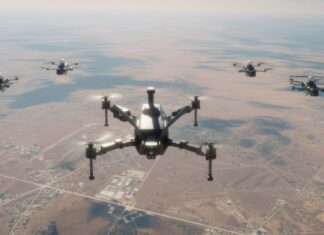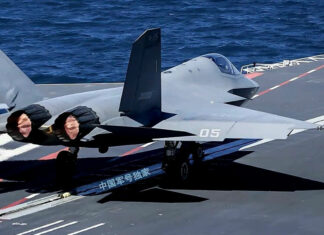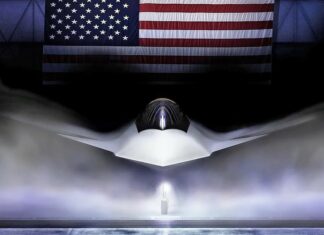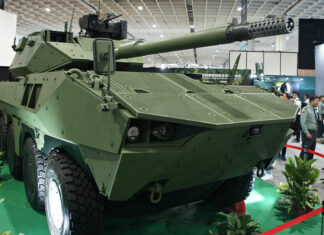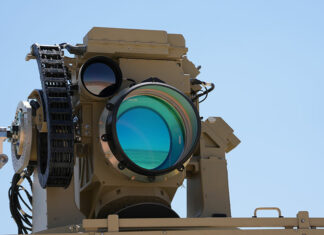By David Eshel
Just as the fifteen British captives landed happily on England’s soil, last Thursday, the shocking news filtered through the already, high-spirited celebrating media, that four British soldiers became the new victims of the deadly device known as Explosively Formed Projectile (EFP), an offspring of the equally deadly shaped charge IED, used already widely in Iraq and Lebanon.
Iranian intelligence operatives have been training Iraqi fighters inside Iran on how to use and assemble deadly roadside bombs known as EFPs, the U.S. military spokesman said Wednesday. Commanders of a splinter group inside the Shiite Mahdi Army militia have told The Associated Press that there are as many as 4,000 members of their organization that were trained in Iran and that they have stockpiles of EFPs, a weapon that causes great uneasiness among U.S. forces here because they penetrate heavily armored vehicles.
The most recent attack on the British troops happened at 0200 near Hayaniya, a slum area on the northwestern outskirts of Basra a known stronghold of the Mahdi Army, a militia affiliated to the notorious anti-western cleric Muqada al-Sadr. The lethal detonation was also followed by an immediate attack with rocket-propelled grenades and small arms fire, indicating a professional, well orchestrated attack mode.
The terrorists have carefully monitored the British patrol activity in and out of Basra city to the main British base at the Basra airfield RAF station. The highway, which is widely perforated from heavy armored traffic, has already become notorious to carefully planted explosive devices, taking heavy toll from passing troops. It seems, that the top killer named “routine patrolling” has reared its ugly head once more in Iraq and at probably the worst possible timing.
The latest incident, one of the most lethal in its case, totally destroyed the 25 ton FV510 Warrior armored vehicle, killing all of its occupants. One man escaped, however, with serious life-threatening wounds. It is not known if he was inside or dismounted when the blast occurred.
According to British information, the FV510 Warrior (WR) is designed to withstand an explosion from a 155mm IED shell at 10m and direct fire from heavy machine guns up to 14.5mm. Before Operation Iraqi Freedom (UK Telic) additional armored protection was fitted to vehicles, but no official details are available. Media reports from the scene show several pictures taken at different spots. The one related to Thursday’s attack is the one showing a rather shallow crater in the middle of the highway, in which the EFP seems to have been buried and then exploded under the hull of the unfortunate Warrior vehicle, which stood no chance of survival from the oversized IED blast.
Basra’s police commander, Maj. Gen. Mohammed al-Moussawi, having examined the spot where Thursday’s attack took place warned that this type of explosives has sofar not been used in southern Iraq. His description indicated a known Iranian design explosively formed projectile (EFP). The general mentioned two similar devices discovered Friday morning, one on the road leading to Basra palace, in downtown city, where British military and civil administration facilities are housed and a second on the road to the Airbase, not far from Thursday’s incident.
A conventional shaped charge has a generally conical metal liner projecting a hypervelocity jet of metal plasma capable of penetrating into thick armor steel; however, as the jet breaks up into particles drifting out of alignment, these greatly diminish the weapon’s effectiveness fired from longer range. In contrast, an (EFP) has an outside liner in the shape of a shallow dish. On detonating the explosive, the liner is transformed into a compact, aerodynamically shaped body of metal, normally remaining intact and is therefore able to penetrate armor at long range. This high energy projectile easily punches through the outer protection of light- to medium-armored vehicles, delivering a devastating spray of fragments from liner material and vehicle armor backspall, spreading into the vehicle’s interior. The impact generally causes devastating effect on crew members and equipment, with high probability of causing secondary explosions from ammunition stores.
 EFP charges are generally cylindrical, fabricated from commonly available water or oil pipe, with the forward end closed by a concave copper or steel disk-shaped liner to create a shaped charge. Explosive is loaded behind the metal liner to fill the pipe. The average velocity is typically over 1,500 m/s depending on the design and type of explosive used. Through its kinetic energy on the order of 1 MJ, the projectile is capable of penetrating more than 100 mm of armor plate.
EFP charges are generally cylindrical, fabricated from commonly available water or oil pipe, with the forward end closed by a concave copper or steel disk-shaped liner to create a shaped charge. Explosive is loaded behind the metal liner to fill the pipe. The average velocity is typically over 1,500 m/s depending on the design and type of explosive used. Through its kinetic energy on the order of 1 MJ, the projectile is capable of penetrating more than 100 mm of armor plate.
A new type of more sophisticated IED consists of oversized “shaped charge”, located under the road surface to explode under the hull of a passing armored vehicle.
Thursday’s incident was certainly not the first, in which resulted in such shocking results. Among the fist known, were two attacks on IDF Merkava Mk3 tanks in Gaza early in 2002. The first of two occurred on February 14 near Netzarim Junction in the Gaza strip, on a tank, which lacked the protective base plates, specially designed to enhance the vulnerable bottom of the tank, a criminal offense, which cost the lives of the crew.
Bottom hull protection plates have been in use with the IDF since the mid-80s to provide tanks with increased protection against roadside bombs frequently used by Hizbullah guerillas in South Lebanon and had already saved many a tanker’s life from similar attacks.

Investigation of the incident revealed that the bomb included over 80kg of a powerful mix from Czech made C-4 CTP plastic explosives and highly lethal detonating charges. It exploded under the right side of the passing tank. The blast dented the belly floor, forcing the lower hull shifting upward. As result, the frontally located power pack was blown up towards the gun barrel which flipped the 22 ton turret off its ring hinges. Miraculously, the gunner, sitting in the lower hull under the turret ring survived virtually unhurt, as the protected ammunition containers did not detonate, nor was there a lethal fire from exploding ammunition or ignited fuel, both located behind safe bulkheads in the hull. Unfortunately, due to dangerous routine adherence, another such incident happened in Gaza, until the IDF woke up and resorted to more efficient measures, introducing the well known Low Intensive Combat (LIC) doctrine, which solved much of the problem. Unfortunately on 12 July 2006, while racing into Lebanon in futile chase of the abducted soldiers, a Merkava MK2, devoid of LIC protective kit, was blown up by a 150kg oversized explosive device and totally destroyed, killing the entire crew. Ignoring operational drill discipline was to blame once more for needless loss if life.
In Iraq the worst insurgency attack, using oversized IED happened on the morning of October 29, 2004 near Balad, in northern Iraq. This incident involved a US 4th Mechanised Inf. Division M-1A2 SEP version, equipped with the most sophisticated armor protection. It was also the first time that such a heavily armored vehicle was disabled by such powerful (over 100kg of explosive) remote-controlled improvised explosive device in Iraq. Through the force of the tremendous blast, the 70- ton behemoth rolled over an embankment, the turret fell off, two crew members were killed outright and one seriously wounded. The US Army refused, at first, any information, not to mention photos from the grizzly scene, however, individual sources published photos, which indicated the amount of carnage that such, rather simple devices, can cause to a huge steel monster of its kind. The US Army is also bolstering the protection of its M2 Infantry Fighting Vehicle, with the addition of belly armor, protecting against belly charges IEDs.
In June 2005, General John R. Vines, then the senior U.S. commander in Iraq, told news reporters that the Iraqi insurgents had probably drawn on the new version of what was later known as explosively formed projectile, bomb-making expertise from former Saddam Hussein’s army depots. But a Pentagon official involved in combating the new IEDs told the New York Times that the first such bombs examined by the U.S. military had required considerable expertise, and that well-trained former government specialists were probably involved in making them.
The use of infrared triggers was regarded as a tribute to the insurgents’ “resourcefulness” in using new deadlier IED attack modes, according to the Pentagon source. While remotely controlled IEDs require the use of electromagnetic device (such a remote control radio, cellular phone etc) to command the explosion, infrared triggers enable the autonomous employment of EFP roadside IEDs (RSIED), as he explosion is triggered when an infra-red beam is broken. Such IED projectiles are capable of penetrating even the armor of 60-ton Abrams tanks. However, due to their superior protection, main battle tanks usually survive such attacks without serious damage. Unfortunately, armored personnel carriers and light vehicles, such as the Warrior and Land Rovers, used by British forces in southern Iraq, offer significantly less protection and become easy prey for such RSIEDs.
The London based Sunday Telegraph was the first newspaper to report the use of such infra-red triggered devices, used against British troops, believed to be “imported” from Iran. Since last May, according to UK MOD reports, several British soldiers have been killed in Iraq, including 12 by roadside bombs made up of EFPs and triggered by infra-red detonators. It may not be by sheer coincidence, that Coalition forces recently intercepted a shipment of infra-red triggered EFPs being transported into Iraq across the Shatt al-Arab waterway from Iran. This may well explain Captain Chris Air’s frank explanation that Royal Navy routine checks in the Shatt-al-Arab waterway may indeed be crucial to save British and US soldier’s lives in Iraq.

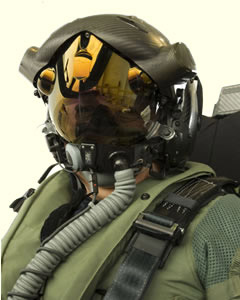

 demonstrated structural integrity to 600 KEAS as a critical risk mitigation step towards full flight certification.
demonstrated structural integrity to 600 KEAS as a critical risk mitigation step towards full flight certification.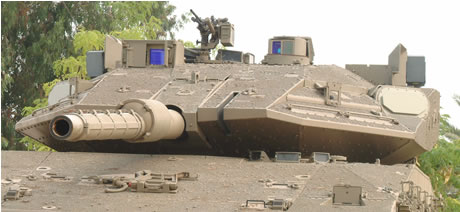
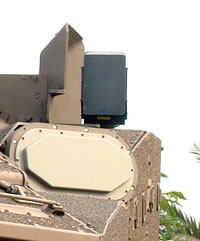
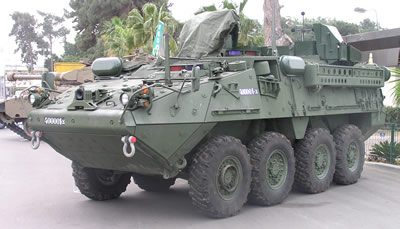

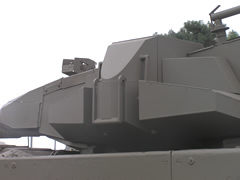
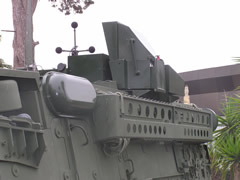
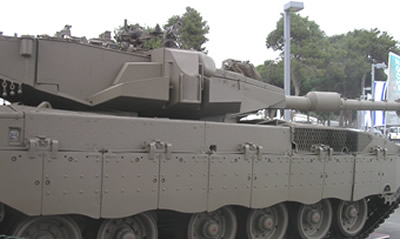
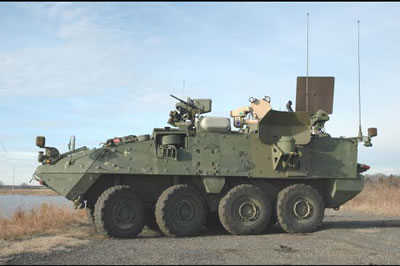
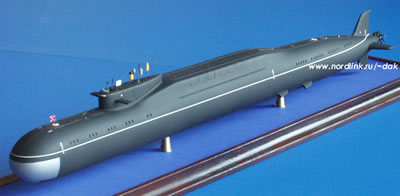
 EFP charges are generally cylindrical, fabricated from commonly available water or oil pipe, with the forward end closed by a concave copper or steel disk-shaped liner to create a shaped charge. Explosive is loaded behind the metal liner to fill the pipe. The average velocity is typically over 1,500 m/s depending on the design and type of explosive used. Through its kinetic energy on the order of 1 MJ, the projectile is capable of penetrating more than 100 mm of armor plate.
EFP charges are generally cylindrical, fabricated from commonly available water or oil pipe, with the forward end closed by a concave copper or steel disk-shaped liner to create a shaped charge. Explosive is loaded behind the metal liner to fill the pipe. The average velocity is typically over 1,500 m/s depending on the design and type of explosive used. Through its kinetic energy on the order of 1 MJ, the projectile is capable of penetrating more than 100 mm of armor plate.
